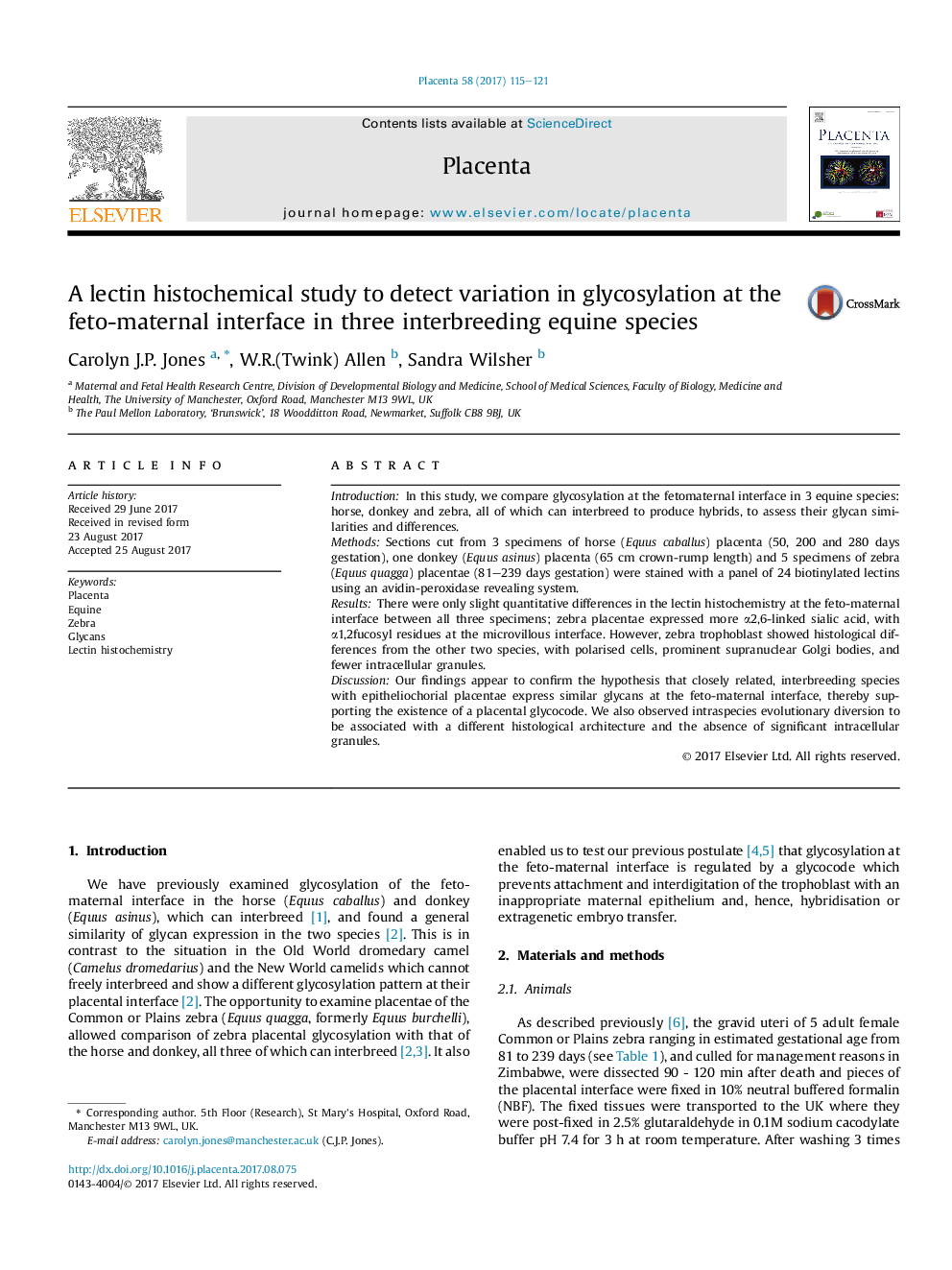| کد مقاله | کد نشریه | سال انتشار | مقاله انگلیسی | نسخه تمام متن |
|---|---|---|---|---|
| 5586152 | 1568550 | 2017 | 7 صفحه PDF | دانلود رایگان |

- Glycans at the horse, donkey and zebra placental interface shows many similarities.
- Zebra trophoblast shows histological polarisation lacking in horse and donkey.
- Zebra trophoblast shows a vesicular structure with few intracellular granules.
- Despite structural changes placental glycans are similar in zebra, horse and donkey.
- Interbreeding Equid species share a placental glycocode.
IntroductionIn this study, we compare glycosylation at the fetomaternal interface in 3 equine species: horse, donkey and zebra, all of which can interbreed to produce hybrids, to assess their glycan similarities and differences.MethodsSections cut from 3 specimens of horse (Equus caballus) placenta (50, 200 and 280 days gestation), one donkey (Equus asinus) placenta (65 cm crown-rump length) and 5 specimens of zebra (Equus quagga) placentae (81-239 days gestation) were stained with a panel of 24 biotinylated lectins using an avidin-peroxidase revealing system.ResultsThere were only slight quantitative differences in the lectin histochemistry at the feto-maternal interface between all three specimens; zebra placentae expressed more α2,6-linked sialic acid, with α1,2fucosyl residues at the microvillous interface. However, zebra trophoblast showed histological differences from the other two species, with polarised cells, prominent supranuclear Golgi bodies, and fewer intracellular granules.DiscussionOur findings appear to confirm the hypothesis that closely related, interbreeding species with epitheliochorial placentae express similar glycans at the feto-maternal interface, thereby supporting the existence of a placental glycocode. We also observed intraspecies evolutionary diversion to be associated with a different histological architecture and the absence of significant intracellular granules.
Journal: Placenta - Volume 58, October 2017, Pages 115-121